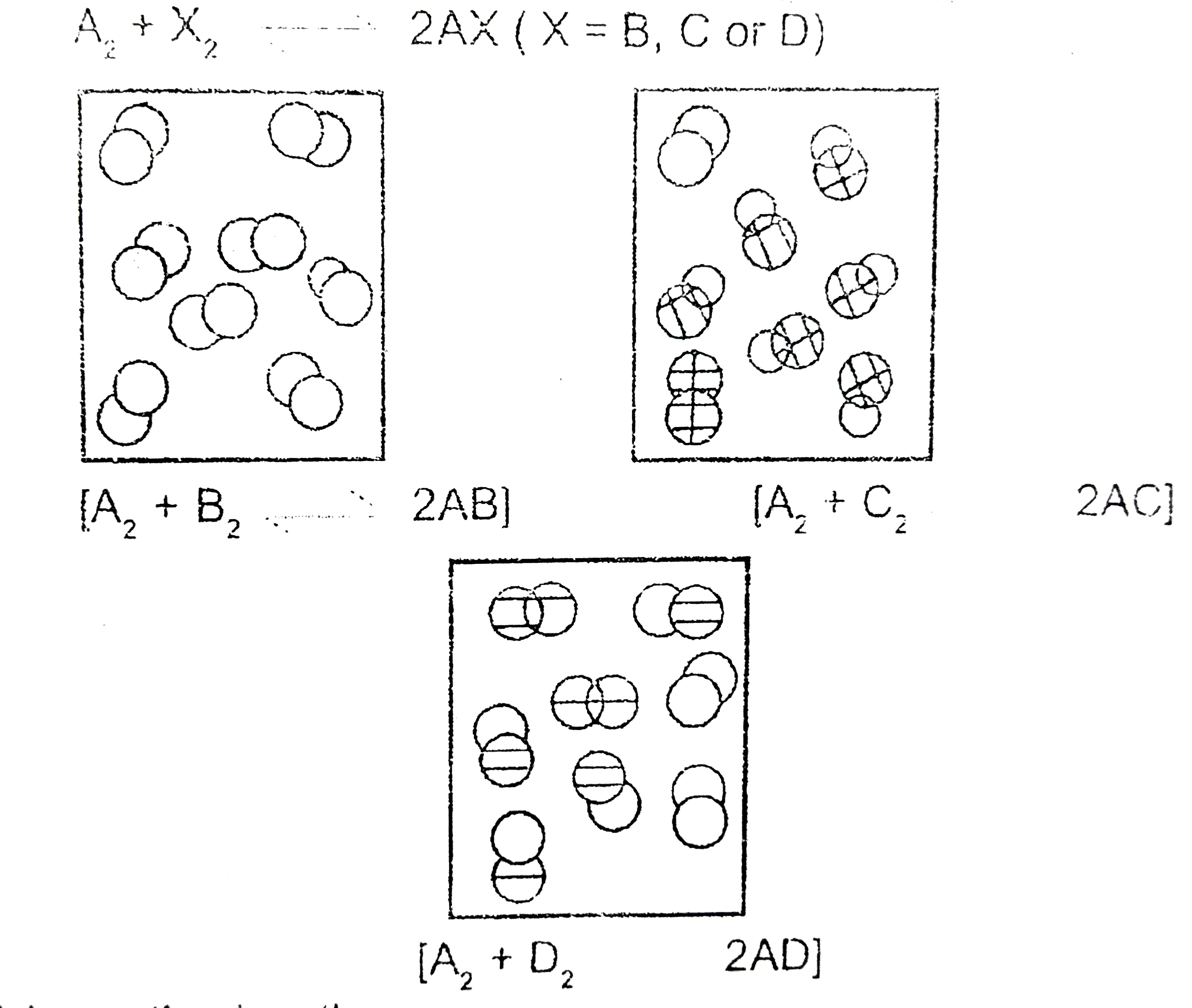In the reversible reaction of the type A+B⇔AB, in general.
Neither of the reactions will be endothermic.
Both forward and backward reactions are exothermic.
Forward reaction will be exothermic.
Backward reaction will be exothermic.
To solve the question regarding the reversible reaction A+B⇌AB, we will analyze the nature of the forward and backward reactions in terms of energy changes.
1. Identify the Reaction:
The given reaction is A+B⇌AB. This indicates that reactants A and B combine to form product AB, and this process can be reversed.
2. Understand Bond Formation and Breaking:
- In the forward reaction (A+B→AB), new bonds are formed when A and B combine to create AB.
- In the backward reaction (AB→A+B), bonds in the product AB are broken to regenerate the reactants A and B.
3. Energy Changes:
- Exothermic Reaction: A reaction that releases energy (usually in the form of heat) to the surroundings. This typically occurs when new bonds are formed.
- Endothermic Reaction: A reaction that absorbs energy from the surroundings. This typically occurs when bonds are broken.
4. Analyze the Forward Reaction:
Since the forward reaction involves the formation of bonds (from A and B to AB), it releases energy. Therefore, the forward reaction is exothermic.
5. Analyze the Backward Reaction:
The backward reaction involves breaking the bonds in AB to form A and B. This process requires energy input, meaning that the backward reaction is endothermic.
6. Evaluate the Given Options:
- Neither of the reactions will be endothermic: Incorrect, as the backward reaction is endothermic.
- Both forward and backward reactions are exothermic: Incorrect, as the backward reaction is endothermic.
- Forward reaction will be exothermic: Correct, as established.
- Backward reaction will be exothermic: Incorrect, as the backward reaction is endothermic.
7. Conclusion:
The correct statement is that the forward reaction will be exothermic.
Final Answer:
The correct option is: Forward reaction will be exothermic.
The given reaction is A+B⇌AB. This indicates that reactants A and B combine to form product AB, and this process can be reversed.
- In the forward reaction (A+B→AB), new bonds are formed when A and B combine to create AB.
- In the backward reaction (AB→A+B), bonds in the product AB are broken to regenerate the reactants A and B.
- Exothermic Reaction: A reaction that releases energy (usually in the form of heat) to the surroundings. This typically occurs when new bonds are formed.
- Endothermic Reaction: A reaction that absorbs energy from the surroundings. This typically occurs when bonds are broken.
Since the forward reaction involves the formation of bonds (from A and B to AB), it releases energy. Therefore, the forward reaction is exothermic.
The backward reaction involves breaking the bonds in AB to form A and B. This process requires energy input, meaning that the backward reaction is endothermic.
- Neither of the reactions will be endothermic: Incorrect, as the backward reaction is endothermic.
- Both forward and backward reactions are exothermic: Incorrect, as the backward reaction is endothermic.
- Forward reaction will be exothermic: Correct, as established.
- Backward reaction will be exothermic: Incorrect, as the backward reaction is endothermic.
The correct statement is that the forward reaction will be exothermic.
The correct option is: Forward reaction will be exothermic.
Topper's Solved these Questions
- THERMODYNAMICSBOOK - CENGAGE CHEMISTRY ENGLISHCHAPTER - THERMODYNAMICSEXERCISE - Exercise
1 Videos
- THERMODYNAMICSBOOK - CENGAGE CHEMISTRY ENGLISHCHAPTER - THERMODYNAMICSEXERCISE - Ex 6.1
26 Videos
- STOICHIOMETRYBOOK - CENGAGE CHEMISTRY ENGLISHCHAPTER - STOICHIOMETRYEXERCISE - Archives Subjective
33 Videos
Similar Questions
A reversible reaction is one which
View SolutionIn a reversible reaction a catalyst :-
View SolutionIn the reversible reaction A + B ⇔ C + D, the concentration of each C and D at equilobrium was 0.8 mole/litre, then the equilibrium constant Kc will be
View SolutionAn example of a reversible reaction is
View SolutionA reaction of a type : AB+CD→AD+CD, involves
View SolutionThe following pictures represents the equilibrium state for three different reactions of the type
A2+X2⇔2AX (X=B,CorD)

Which reaction has the largest equilibrium constant?
View SolutionIn a reversible reaction, the forward reaction was 3 times faster than that of reverse reaction. The reaction quotient is.....
View Solutionin a reversible reaction the energy of activation of the forward reaction is 50 kcal .
the energy of activation for the reverse reaction will be
View SolutionFor a general electrochemical reaction of the type
αA+bBne−⇐⇒cC+dD
Nernst equation can be written as
View SolutionFor reversible reaction, A+B⇔C+D, the graph for rate of reaction with time is given below.
Mark the terms (p),(q) and (r )

View Solution
